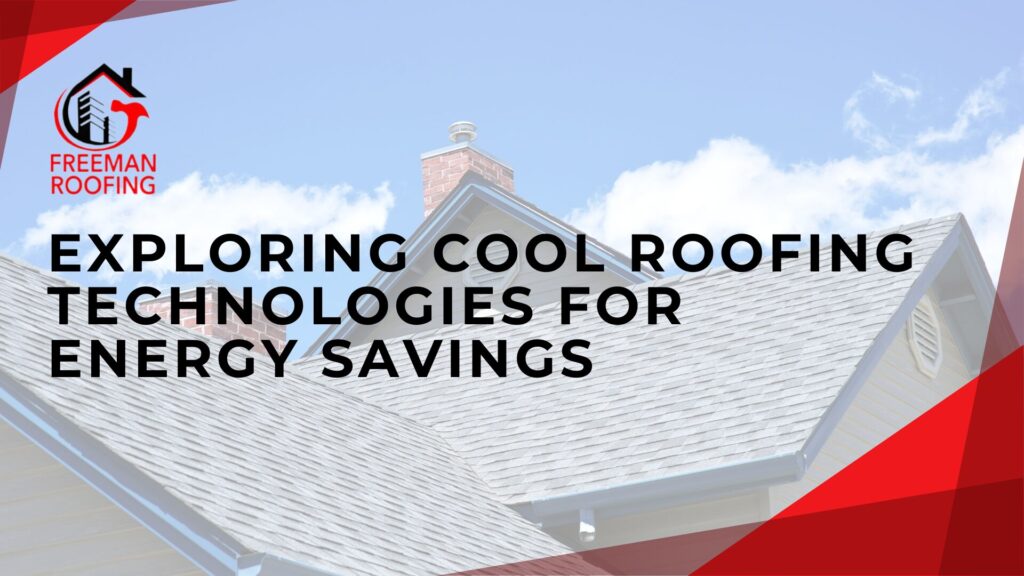Exploring Cool Roofing Technologies for Energy Savings

As energy efficiency becomes a top priority for homeowners, cool roofing technologies are revolutionizing how we think about roofs. These innovative solutions are designed to reflect more sunlight and absorb less heat, helping to lower energy bills and reduce carbon footprints. Let’s dive into the world of roofing and discover how it can transform your home.
What Are Cool Roofs?
Cool roofs are designed to stay cooler in the sun compared to traditional roofing materials.
- How They Work: By using reflective materials or coatings, cool roofs deflect more sunlight, reducing heat absorption.
- Benefits: These roofs help maintain indoor comfort, especially in warmer climates, and reduce the demand for air conditioning.
Types of Cool Roofing Materials
- Cool Shingles (txdroofing.com)
- Asphalt shingles with reflective granules to minimize heat absorption.
- Ideal for traditional home designs.
- Metal Roofs
- Naturally reflective and often coated with cool roofing finishes.
- Durable and energy-efficient.
- Tile Roofs
- Clay or concrete tiles with reflective coatings.
- Excellent for hot climates and Mediterranean-style homes.
- Single-Ply Membranes
- Synthetic materials like TPO and PVC with high reflectivity.
- Commonly used on commercial buildings but adaptable for residential use.
- Green Roofs (txdroofing.com)
- Rooftops covered in vegetation that absorb heat and provide insulation.
- Eco-friendly but requires proper maintenance.
The Science Behind Cool Roofing
Cool roofing materials are rated based on two key factors:
- Solar Reflectance (SR): Measures the ability to reflect sunlight. Higher values indicate better reflectivity. (730southexteriors.com)
- Thermal Emittance (TE): Measures how well the material releases absorbed heat. High TE reduces roof surface temperature.
Energy Savings with Cool Roofs
Cool roofing technologies significantly cut down on cooling costs.
- Lower Energy Bills: Reflective roofs reduce indoor temperatures, lowering air conditioning usage.
- Improved HVAC Efficiency: Cooler interiors mean less strain on HVAC systems, extending their lifespan.
Environmental Benefits
Adopting cool roofing contributes to a healthier planet.
- Reduced Urban Heat Islands: By minimizing heat absorption, cool roofs help combat the temperature rise in urban areas.
- Lower Carbon Footprint: Decreased energy consumption translates to fewer greenhouse gas emissions.
Installation Considerations
Switching to a cool roof involves more than selecting a material.
- Local Climate: Cool roofs are especially effective in warm, sunny areas like those served by roofing companies Pensacola.
- Roof Pitch and Design: Flat roofs benefit from single-ply membranes, while sloped roofs pair well with shingles or tiles.
- Professional Installation: Ensure your cool roof is properly installed by trusted roofing companies Pensacola for optimal performance.
Costs and Incentives
Cool roofing may have a higher upfront cost but pays off in the long run.
- Initial Investment: Advanced materials and coatings can increase installation costs.
- Long-Term Savings: Lower energy bills quickly offset the initial expense.
- Incentives: Many areas offer tax credits or rebates for cool roof installations.
Maintenance Tips for Cool Roofs
Regular upkeep ensures your cool roof stays effective.
- Clean Periodically: Remove dirt and debris to maintain reflectivity.
- Inspect Annually: Check for damage or wear that could impact performance.
- Reapply Coatings: Reflective coatings may need periodic reapplication to stay effective.
Bottom Line: Cool Roofs Are a Smart Investment
Cool roofing technologies offer homeowners an efficient way to save on energy bills while contributing to environmental sustainability. Whether you choose reflective shingles, tiles, or a green roof, working with roofing companies Pensacola ensures you get the best solutions tailored to your home and climate.
